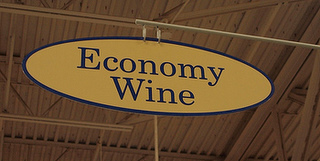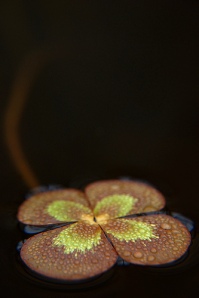Did you know that New Mexico is the oldest winegrowing region in the U.S.? Yeah, me neither. But I did know that Gruet Winery, arguably the best sparkling wine producer in the country, is located there. Over the years I have sold Gruet’s wines in my jobs at various wine store, and I have been happy to recommend (and drink) them. They are not difficult to find (currently distributed in 48 states) and represent a great value in bubbly, starting around $14 a bottle. For me, there is no better producer of domestic sparkling wine than Gruet, due in large part to its awesome cost-to-quality ratio, something that is sorely lacking in domestic fizz — particularly here in California, but more on that later…
Last week, I took a little vacation to our country’s oft-overlooked 47th state, and though this was not a “wine trip,” per se, I did stop in at Gruet’s tasting room in Albuquerque to taste their wines at the source. Sort of. Gruet’s vineyards are located 150 miles south of its tasting room, in Truth or Consequences, NM, but the wine itself is made at the facility in Albuquerque, as it has been since the first vintage in 1987.
First, a little history. The Gruet family (from France, natch) were not New Mexico winemaking pioneers. The first wine grapes were planted in the state around 1629 by monks who smuggled over some Mission grapes from Spain in order to make sacramental wine. By the late 1800s, New Mexico was officially wine country, producing more than three million liters of wine per year. So what happened? Why isn’t New Mexico the wine powerhouse it once was? Two things: Prohibition in 1919 followed by the Rio Grande’s extensive flooding in 1926, the combined effect of which destroyed many of the state’s oldest and largest vineyards.
So in the early 1980s when the Gruets were traveling through the Southwest, the wine tradition in New Mexico was just beginning again. During their trip they met some European winemakers who were having success with vineyards they had planted south of Albuquerque so the Gruets (who had been making Champagne in Champagne since the 1950s) decided to plant an experimental vineyard there, too. And, it worked. At, more than 4,000 feet in elevation, the Gruet vineyards are among the highest in the country, and this is to their advantage, as daytime temperatures in New Mexico can be very hot. But at night, at this elevation, the temperature drops as much as 30 degrees very consistently, allowing the grapes to rest, mature slowly, and ultimately make very good wines.
So back to my visit. The Gruet tasting room is a dated-looking faux château, located on a highway, in an industrial park, next to an RV dealership. Check your idyllic wine country notions at the door. They won’t be fulfilled in this setting. Time to get on with the business of tasting wine. Here in California, I often see Gruet’s NV Brut, Blanc de Noirs, and sometimes its Rosé. These were all on offer, but I was more interested in some of the wines I hadn’t seen back home, namely:
NV Sauvage ($13.75) – A brand new release from Gruet. This sparkling is made from 100% Chardonnay to which zero dosage is added. Dosage is the mix of wine and sugar that is traditionally added to bubbly just before it is corked. This slightly sweet (levels vary) mixture helps to balance the high acidity that typically exists in sparkling wines. Non-dosed fizzies are becoming trendy these days. I happen to like this style, but it can be too tart for some. Although its worth mentioning that Gruet’s version is well-balanced, fresh and crisp, without being austere.
NV Extra Dry ($13.75) – Another new release also made from 100% Chardonnay. This time there is dosage added, and for Extra Dry, the level of sweetness is typically on the higher side. Extra Dry is kind of a misnomer, in that on the scale of sparkling wines, it is generally sweeter than a Brut. How’s that for confusing! Given my predilection for the drier styles, I typically veer away from Extra Dry for my personal consumption, which is exactly why I wanted to taste this wine at Gruet. I have to say I was pleasantly surprised. Instead of the sweetness I expected, I was met with ripe green apple with just a hint of creaminess.
2006 Blanc de Blancs ($25) – Unlike still wine, vintage sparkling wine (vintage = a date on the label) is rare (it’s not made every year, only in the best years) and it takes a lot longer to make. Thus, the price of a vintage is usually quite a bit higher. So to see a vintage for $25 a bottle is a relative value. This Blanc de Blancs — literally white from whites, which means all Chardonnay is in the bottle — was aged for three years before its release. I found it to be very elegant and lemon citrus flavored with a light hazelnut toastiness.
2003 Grand Rosé Vintage ($32) – This blend of 92% Chardonnay and 8% still Pinot Noir (the latter gives the pink color) was the most vinous (i.e. tasted the most like regular wine) of the things I tasted. There’s a little touch of smokiness on this bottling, as the still Pinot Noir that goes into the blend comes out of French Oak barrels.
Gruet makes a bit of still wine, mostly Chardonnay and Pinot Noir, but unbeknownst to me until my visit they also produce a very small amount of Syrah. I tasted the 2007 Syrah ($25). This bottling is the winery’s fourth vintage of the Rhône grape variety, and I have to say, I was pleasantly surprised. Instead of being heavy and tannic, this wine was lithe and elegant with a nose of violets and rose petals followed by smooth blueberry notes on the palate.
I left Albuquerque more than satisfied with my visit to Gruet, and with a single nagging question: Why doesn’t California produce good-quality, affordable sparkling wine like this? For my money, the Roederer Estate Brut NV from Anderson Valley is the best cost-to-quality ratio I can find in my home state, and it’s $20 — a full $5 more than Gruet’s Brut NV. My other CA choices (almost all of which are owned by large Champagne houses) are variously overripe, overly sweet (due to high dosage that’s out of balance with the wine), and overpriced. My suggestion: California bubbly producers should take a few cues from New Mexico. It is, after all, the oldest winegrowing region in the U.S.




 It’s officially
It’s officially  When was the last time I saw a wine coupon in the paper? Maybe….never? Liquor coupons, yes. Particularly in the last six months or so, but not wine. Not until now. This discovery comes on the eve of California Wine Month and just a few days after Sterling’s parent company,
When was the last time I saw a wine coupon in the paper? Maybe….never? Liquor coupons, yes. Particularly in the last six months or so, but not wine. Not until now. This discovery comes on the eve of California Wine Month and just a few days after Sterling’s parent company,